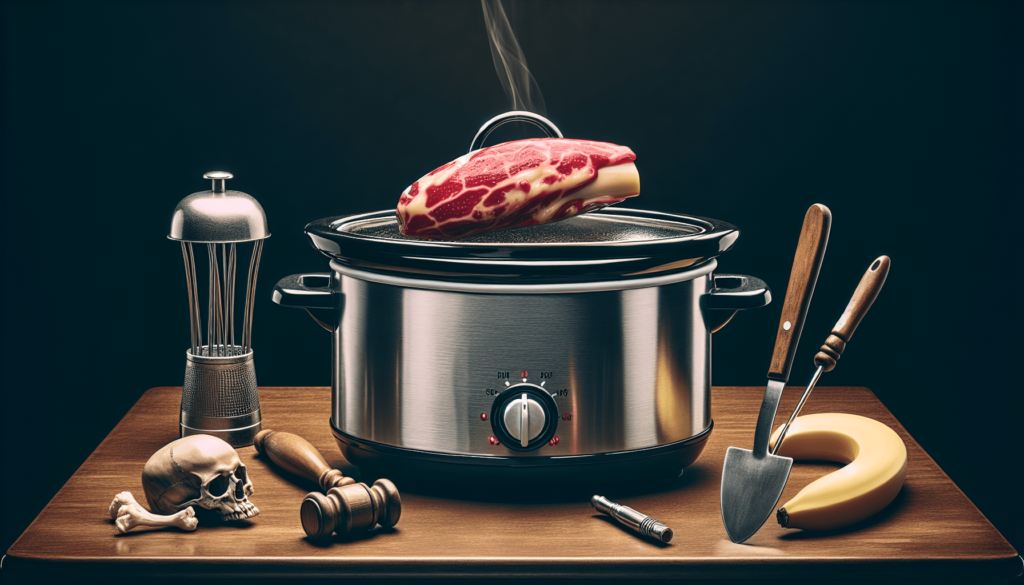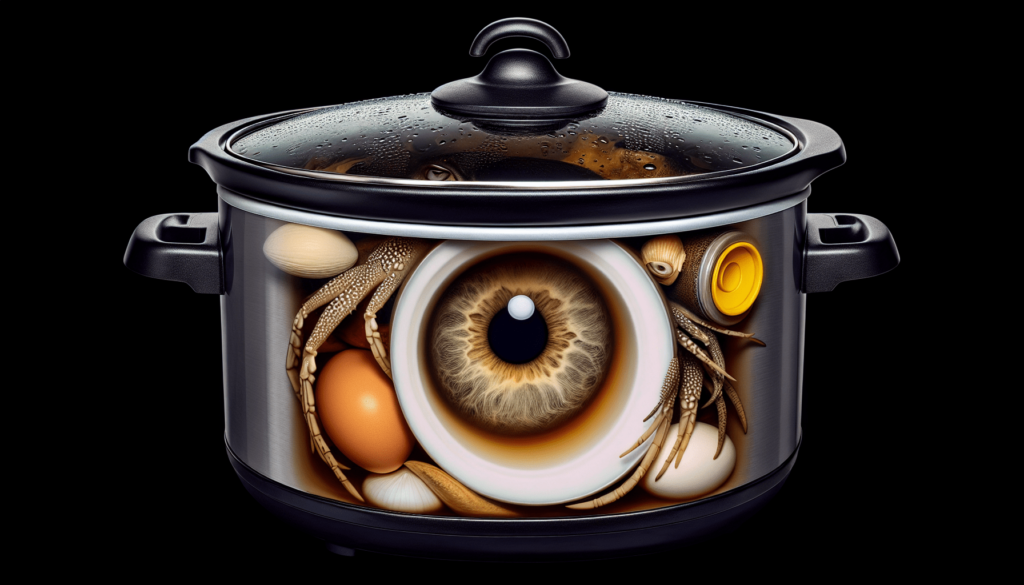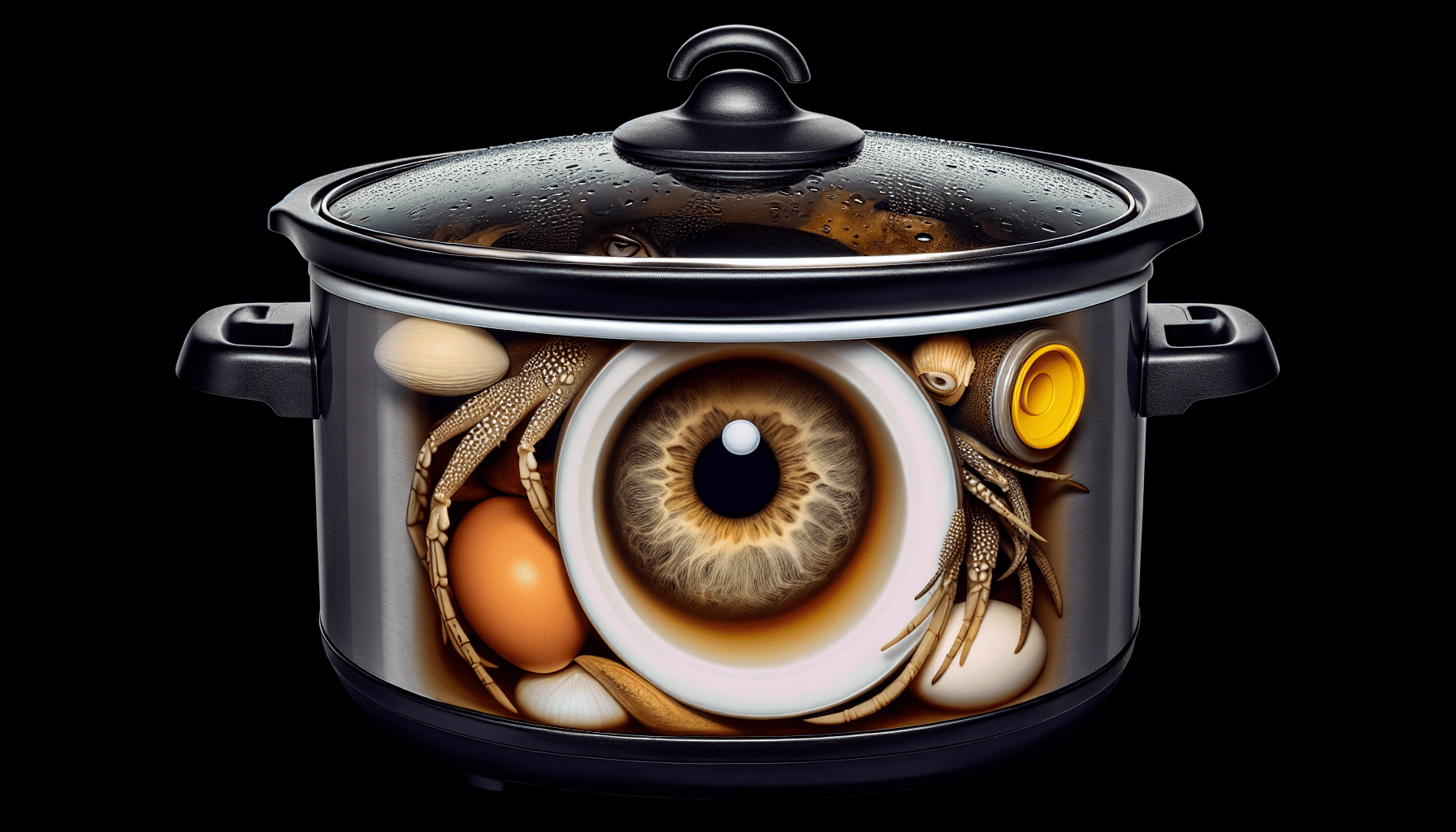Imagine having a kitchen gadget that effortlessly transforms tough cuts of meat into tender and flavorful masterpieces while you go about your day. It’s no wonder that slow cookers have become a staple in many households. But amidst their seemingly magical abilities, have you ever wondered what cannot be cooked in a slow cooker? From delicate seafood to crunchy vegetables, there are a few surprising ingredients that simply don’t belong in this cozy countertop contraption. Let’s take a closer look at what you should keep away from your beloved slow cooker and why.

Foods that Require Quick Cooking
Raw seafood
When it comes to raw seafood, such as sushi or sashimi, quick cooking is essential. Slow cooking methods like using a slow cooker are not suitable for raw seafood as they can lead to undesired results. Raw seafood is best enjoyed fresh and should be cooked quickly to preserve its delicate flavors and textures.
Quick-cooking vegetables
Certain vegetables, like broccoli, asparagus, and snap peas, are considered quick-cooking vegetables. These vegetables maintain their crispness and vibrant colors when cooked quickly. Using a slow cooker for these vegetables may result in a mushy and overcooked texture, losing their natural flavors and nutrients.
Delicate cuts of meat
Delicate cuts of meat, such as tenderloin or fish fillets, require quick cooking methods to maintain their tenderness and juiciness. Slow cooking methods can be too harsh on delicate cuts, resulting in a dry and tough texture. It is best to use alternative cooking methods like pan-searing or grilling to ensure the desired outcome for these cuts of meat.
Foods that Require High Heat
Baking recipes
Baking recipes, such as cakes, breads, and pastries, typically require high heat for the proper rising and browning of the ingredients. Slow cookers operate at lower temperatures and lack the ability to provide the necessary heat distribution required for successful baking. For the best results, stick to using an oven when it comes to baking recipes.
Crispy foods
If you’re aiming for a crispy texture in your foods, then a slow cooker may not be the best tool for the job. Foods like french fries, chicken wings, or crispy-skinned roasted meats rely on high heat to achieve that desirable crunch. Slow cookers simply cannot provide the intense heat required to achieve optimum crispiness.
Fried foods
Fried foods, such as tempura or fried chicken, require deep frying in hot oil to achieve their signature crispy and golden-brown exterior. Slow cookers, with their low and steady cooking temperatures, cannot replicate the frying process. It’s best to reserve frying for a traditional stovetop or deep fryer to ensure the desired taste and texture.
Foods that Require Stirring or Monitoring
Recipes that require constant stirring
Some recipes, like risotto or caramel sauce, require constant stirring to ensure even cooking and to prevent burning. Slow cookers, with their hands-off approach, do not allow for the necessary attention and control required for these recipes. It’s better to stick to using a stovetop or oven when it comes to dishes that necessitate continuous stirring.
Doughs and batters
Whether you’re making bread dough or pancake batter, these mixtures often require active monitoring and adjustments during the cooking process. Slow cookers, which provide a closed and sealed environment, do not allow for easy observation or adjustment of the dough’s consistency. It is recommended to use traditional mixing and cooking methods when working with doughs and batters.
Caramelizing sugar
Caramelizing sugar involves carefully heating sugar until it melts and turns into a golden-brown liquid. This process requires constant attention and precise temperature control. Slow cookers, with their slow and steady heat, may not provide the necessary control to achieve the desired caramelization. Using a stovetop or oven would yield better results in this case.
Foods that Need a Crisp Texture or Outer Layer
Crusty breads
Crusty breads, with their golden and crunchy exterior, rely on high heat to achieve the perfect texture. Slow cookers, even on their highest settings, cannot generate the intense heat needed to create that coveted crust. Traditional baking methods, such as using an oven or a bread maker, are more suitable for baking crusty bread.
Pizza crusts
Similar to crusty breads, pizza crusts require high heat to achieve that desirable crispy texture. Slow cookers cannot replicate the quick and intense heat provided by a hot pizza stone or a traditional pizza oven. For pizzas with a perfectly crisp crust, it’s best to stick to conventional pizza-making methods.
Golden-brown meats
Whether you’re searing a steak or roasting a chicken, achieving a golden-brown exterior is often desired for both flavor and presentation. Slow cookers are simply not designed to generate the high heat required to create this desirable browning effect. Opt for using a stovetop or oven to achieve that delicious golden crust on your meats.

Foods that Need to Maintain Their Shape
Eggs
Cooking eggs in a slow cooker may lead to inconsistent results, as the slow and steady heat may cause the eggs to become overcooked or lose their desired shape. Traditional stovetop methods, such as poaching or frying, offer more control over the cooking process and allow for the preservation of the desired egg shape.
Pasta
While pasta can be cooked in a slow cooker, it may become mushy and lose its desired al dente texture. Slow cookers are better suited for long-simmered sauces than for cooking pasta itself. To achieve perfectly cooked pasta with the right amount of bite, it’s recommended to use a stovetop pot of boiling water and proper timing.
Cooked rice
Slow cookers can be used to cook rice, but they may not provide the desired texture and consistency. Rice cooked in a slow cooker can become overly soft, mushy, or even sticky. Using a rice cooker or traditional stovetop methods usually yield better results when it comes to cooking rice to perfection.
Foods that Require a Specific Level of Moisture
Crispy-skinned poultry
When cooking poultry, such as chicken or turkey, achieving crispy skin is often desired. Slow cookers tend to trap moisture and create a moist cooking environment, making it challenging to achieve that desired crispy texture. For crispy-skinned poultry, roasting in an oven or using grilling methods allows for better moisture control and browning.
Roasted vegetables
Roasted vegetables benefit from a dry and high-heat cooking environment to achieve caramelization and a slightly crispy exterior. Slow cookers, with their moist cooking environment, may result in steamed or overly soft vegetables. To achieve perfectly roasted vegetables with a delightful texture, using a hot oven or a grill is the way to go.
Foods that Benefit from Direct Heat
Grilled foods
Grilling is known for creating unique and delicious flavors that come from direct exposure to high heat. Slow cookers do not offer the direct heat necessary for grilling, as they cook food through indirect heat and steam. When it comes to grilling, it’s best to utilize a charcoal or gas grill to achieve that desired smoky and charred flavor.
Searing meats
For beautifully seared meats with a caramelized crust, slow cookers are not the ideal cooking tool. Searing meats requires high heat for a short period to develop that flavorful crust. Slow cookers cannot provide the necessary intensity of heat required for proper searing. Instead, use a hot skillet or grill to achieve that perfect sear on your meats.
Foods that Require Quick Cooling or Chilling
Ice creams and custards
When making ice creams or custards, quick cooling or chilling is essential to prevent ice crystals from forming and to achieve a smooth and creamy texture. Slow cookers, lacking the ability to rapidly cool or chill, cannot provide the desired result. It is preferable to use an ice cream maker or a traditional freezer for making ice creams and custards.
Gelatin-based desserts
Gelatin sets and cools quickly, requiring prompt cooling to achieve its signature firm texture. Slow cookers cannot provide the necessary speed and control for gelatin to properly set. Traditional methods involving refrigerator or freezer cooling are much more suitable for gelatin-based desserts.
Foods that Rely on Thickening Agents
Sauces requiring reduction
Certain sauces, such as reductions or thick gravies, typically require precise control over heat and evaporation. Slow cookers, operating at relatively low and consistent temperatures, may not provide the necessary heat and evaporation power needed for reducing sauces effectively. Using a stovetop or oven allows for better control and quicker reduction.
Sauces thickened with flour or cornstarch
Sauces thickened with flour or cornstarch require consistent and vigorous stirring during the cooking process to prevent clumping or uneven thickening. Slow cookers, with their hands-off approach, do not allow for the necessary stirring and can result in a lumpy or inconsistent texture. It’s best to stick to using a stovetop pot to achieve smooth and evenly thickened sauces.
Foods with Ingredients that Don’t Hold Up Well in a Slow Cooker
Fresh herbs
Fresh herbs, like basil, cilantro, or parsley, provide vibrant flavors to dishes when added at the end of the cooking process. Slow cookers, with their long cooking times and constant heat, can cause fresh herbs to lose their potency and vibrant color. It is best to add fresh herbs towards the end of the cooking process or as a garnish rather than cooking them in a slow cooker.
Soft cheeses
Soft cheeses, such as goat cheese or brie, have a delicate texture and flavor that can be easily compromised by slow cooker temperatures. The prolonged heat exposure in a slow cooker may cause these cheeses to melt too much or lose their distinct characteristics. It is preferable to add soft cheeses as a topping or finishing touch after the dish has been cooked using alternative methods.
In conclusion, while slow cookers are incredibly versatile and convenient appliances for many cooking tasks, there are certain foods and techniques that are better suited for other cooking methods. Whether it’s quick-cooking seafood, high-heat baking, or delicate cuts of meat, it’s important to choose the appropriate cooking technique to ensure the best results. By understanding which dishes require quick cooking, high heat, stirring or monitoring, a crisp texture, shape maintenance, specific moisture levels, direct heat, quick cooling or chilling, thickening agents, or ingredients not suited for a slow cooker, you can make more informed decisions in the kitchen and create delicious meals every time. Remember, experimenting with different cooking methods and techniques will ultimately help you develop your culinary skills and expand your repertoire of dishes. Happy cooking!
